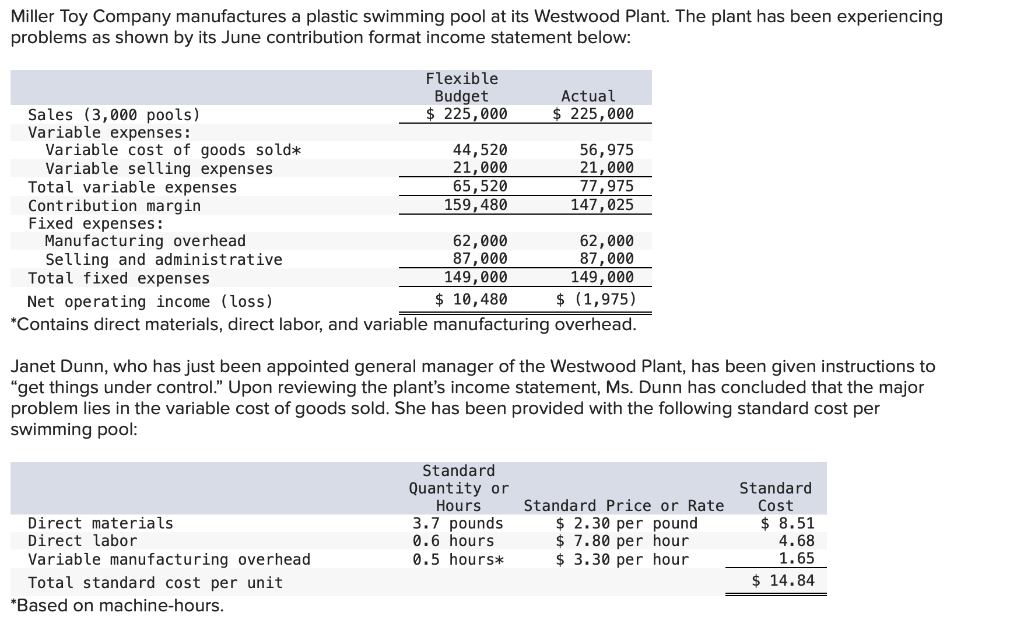
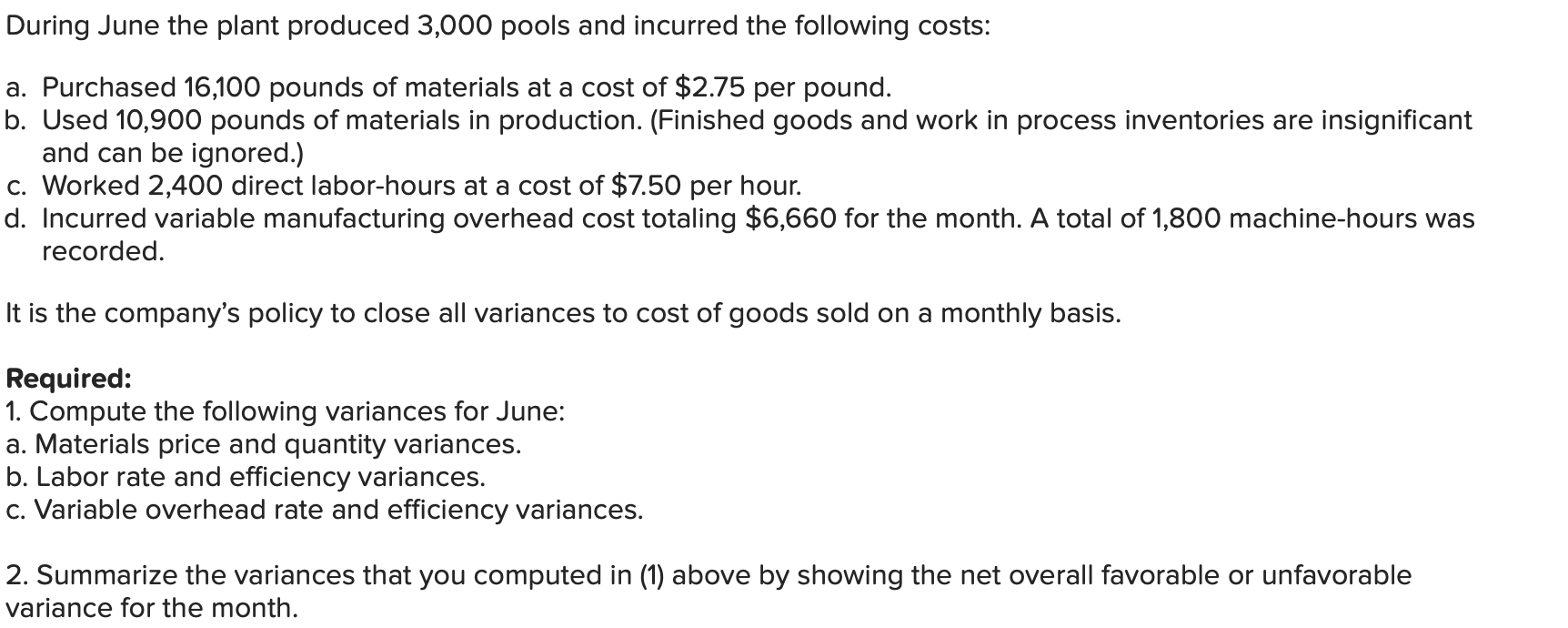
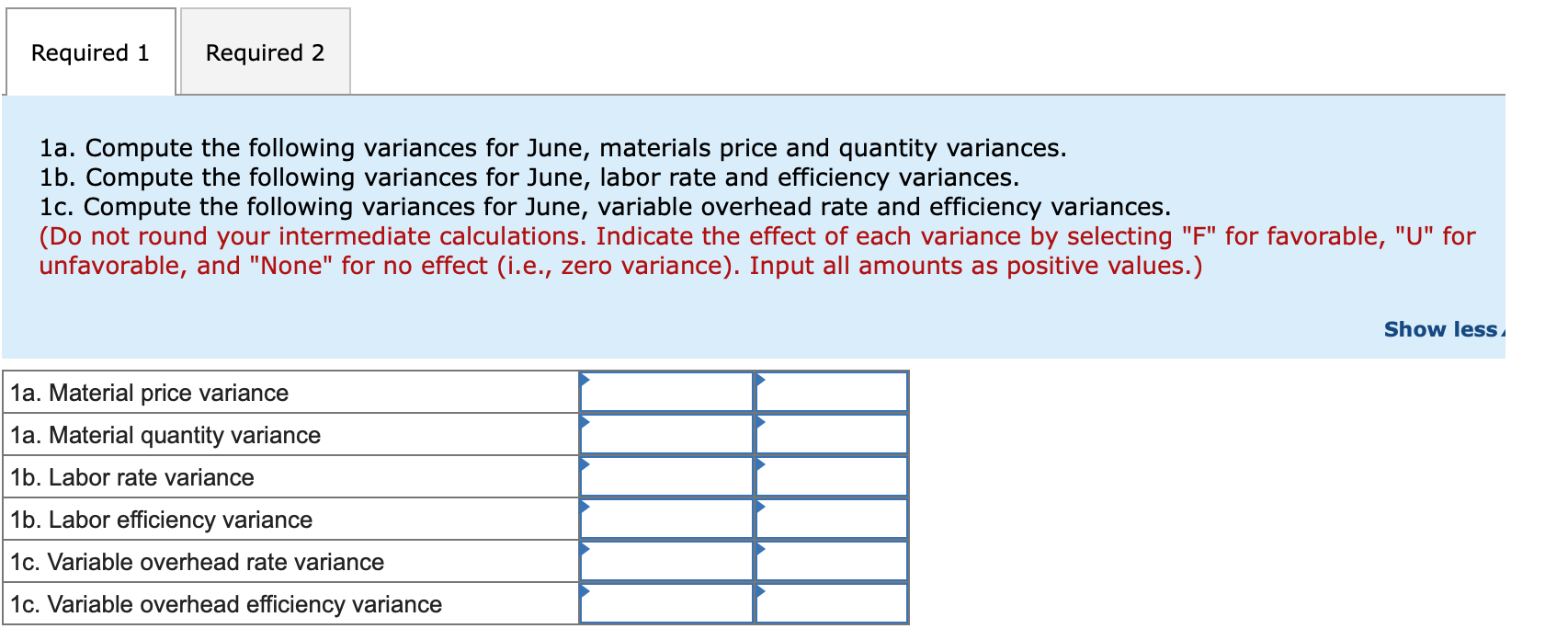

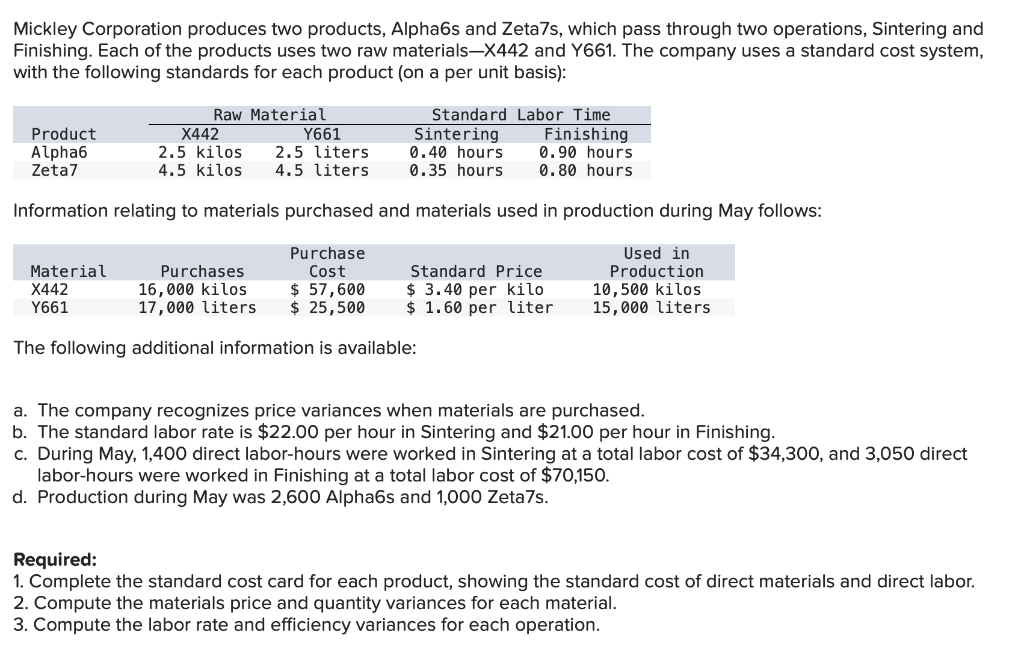
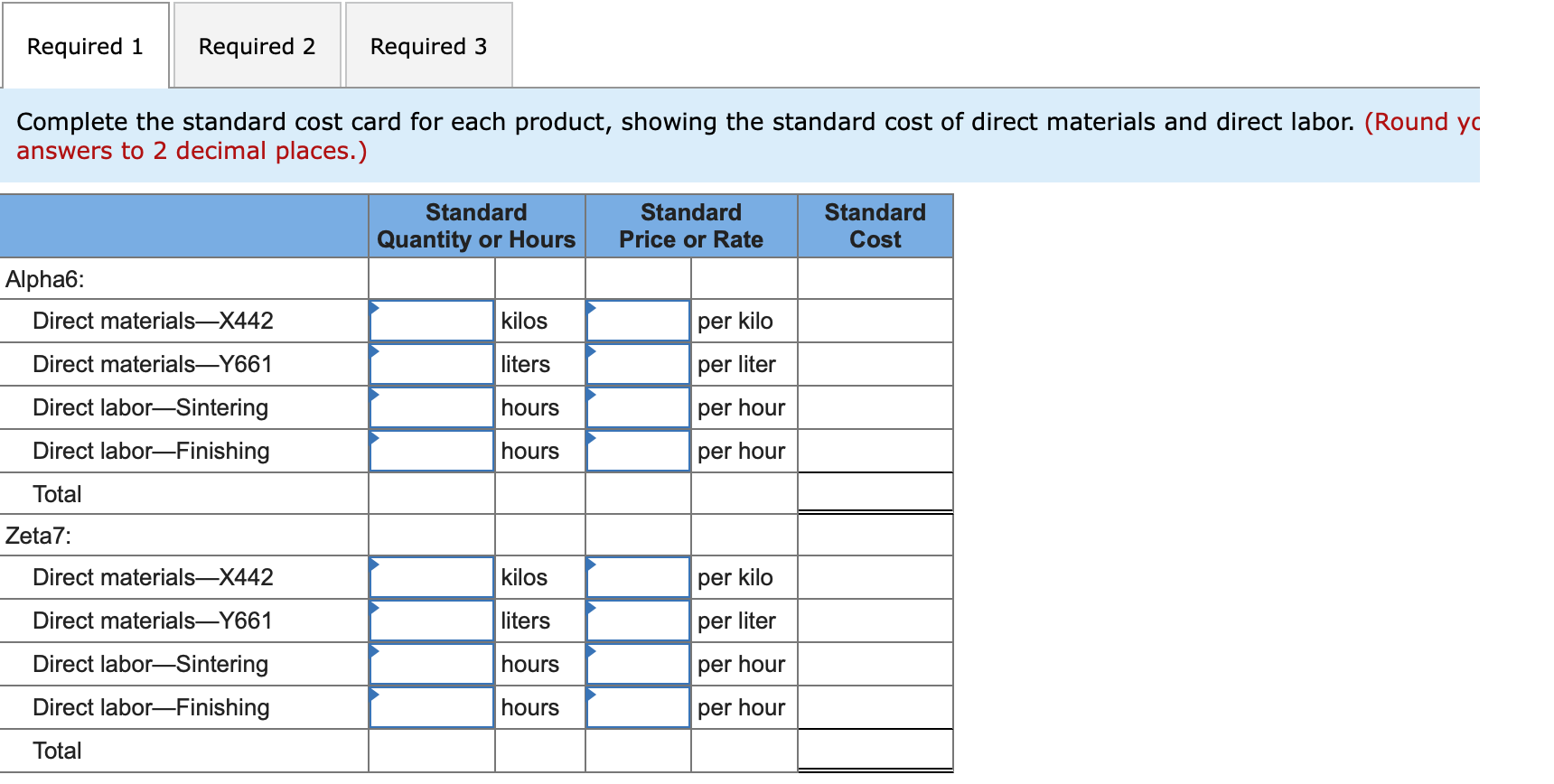


Miller Toy Company manufactures a plastic swimming pool at its Westwood Plant. The plant has been experiencing problems as shown by its June contribution format income statement below: Flexible Budget Actual Sales (3,000 pools) $ 225,000 $ 225,000 Variable expenses: Variable cost of goods sold* 44,520 56,975 Variable selling expenses 21,000 21,000 Total variable expenses 65,520 77,975 Contribution margin 159,480 147,025 Fixed expenses: Manufacturing overhead 62,000 62,000 Selling and administrative 87,000 87,000 Total fixed expenses 149,000 149,000 Net operating income (loss) $ 10,480 $ (1,975) *Contains direct materials, direct labor, and variable manufacturing overhead. Janet Dunn, who has just been appointed general manager of the Westwood Plant, has been given instructions to "get things under control." Upon reviewing the plant's income statement, Ms. Dunn has concluded that the major problem lies in the variable cost of goods sold. She has been provided with the following standard cost per swimming pool: Standard Quantity or Hours 3.7 pounds 0.6 hours 0.5 hours* Direct materials Direct labor Variable manufacturing overhead Total standard cost per unit *Based on machine-hours. Standard Price or Rate $ 2.30 per pound $ 7.80 per hour $ 3.30 per hour Standard Cost $ 8.51 4.68 1.65 $ 14.84 During June the plant produced 3,000 pools and incurred the following costs: a. Purchased 16,100 pounds of materials at a cost of $2.75 per pound. b. Used 10,900 pounds of materials in production. (Finished goods and work in process inventories are insignificant and can be ignored.) C. Worked 2,400 direct labor-hours at a cost of $7.50 per hour. d. Incurred variable manufacturing overhead cost totaling $6,660 for the month. A total of 1,800 machine-hours was recorded. It is the company's policy to close all variances to cost of goods sold on a monthly basis. Required: 1. Compute the following variances for June: a. Materials price and quantity variances. b. Labor rate and efficiency variances. c. Variable overhead rate and efficiency variances. 2. Summarize the variances that you computed in (1) above by showing the net overall favorable or unfavorable variance for the month. Required 1 Required 2 1a. Compute the following variances for June, materials price and quantity variances. 1b. Compute the following variances for June, labor rate and efficiency variances. 1c. Compute the following variances for June, variable overhead rate and efficiency variances. (Do not round your intermediate calculations. Indicate the effect of each variance by selecting "F" for favorable, "U" for unfavorable, and "None" for no effect (i.e., zero variance). Input all amounts as positive values.) Show less 1a. Material price variance 1a. Material quantity variance 1b. Labor rate variance 1b. Labor efficiency variance 1c. Variable overhead rate variance 1c. Variable overhead efficiency variance Summarize the variances that you computed in (1) above by showing the net overall favorable or unfavorable variance for month. (Indicate the effect of each variance by selecting "F" for favorable, "U" for unfavorable, and "None" for no effect (i.e zero variance). Input the amount as positive value.) Net variance Mickley Corporation produces two products, Alphabs and Zeta7s, which pass through two operations, Sintering and Finishing. Each of the products uses two raw materials-X442 and Y661. The company uses a standard cost system, with the following standards for each product on a per unit basis): Product Alpha 6 Zeta 7 Raw Material X442 Y661 2.5 kilos 2.5 liters 4.5 kilos 4.5 liters Standard Labor Time Sintering Finishing 0.40 hours 0.90 hours 0.35 hours 0.80 hours Information relating to materials purchased and materials used in production during May follows: Material X442 Y661 Purchases 16,000 kilos 17,000 liters Purchase Cost $ 57,600 $ 25,500 Standard Price $ 3.40 per kilo $ 1.60 per liter Used in Production 10,500 kilos 15,000 liters The following additional information is available: a. The company recognizes price variances when materials are purchased. b. The standard labor rate is $22.00 per hour in Sintering and $21.00 per hour in Finishing. c. During May, 1,400 direct labor-hours were worked in Sintering at a total labor cost of $34,300, and 3,050 direct labor-hours were worked in Finishing at a total labor cost of $70,150. d. Production during May was 2,600 Alphabs and 1,000 Zeta7s. Required: 1. Complete the standard cost card for each product, showing the standard cost of direct materials and direct labor. 2. Compute the materials price and quantity variances for each material. 3. Compute the labor rate and efficiency variances for each operation. Required 1 Required 2 Required 3 Complete the standard cost card for each product, showing the standard cost of direct materials and direct labor. (Round yo answers to 2 decimal places.) Standard Quantity or Hours Standard Price or Rate Standard Cost Alphab: Direct materialsX442 kilos per kilo Direct materialsY661 liters per liter hours per hour Direct laborSintering Direct laborFinishing hours per hour Total Zeta7: Direct materialsX442 kilos per kilo Direct materials4661 liters per liter hours per hour Direct laborSintering Direct laborFinishing hours per hour Total Required 1 Required 2 Required 3 Compute the materials price and quantity variances for each material. (Indicate the effect of each variance by selecting "F" favorable, "U" for unfavorable, and "None" for no effect (i.e., zero variance). Input all amounts as positive values.) Direct Materials VariancesMaterial X442: Materials price variance Materials quantity variance Direct Materials Variances-Material Y661: Materials price variance Materials quantity variance Required 1 Required 2 Required 3 Compute the labor rate and efficiency variances for each operation. (Indicate the effect of each variance by selecting "F" for favorable, "U" for unfavorable, and "None" for no effect (i.e., zero variance). Input all amounts as positive values.) Direct Labor VariancesSintering: Labor rate variance Labor efficiency variance Direct Labor VariancesFinishing: Labor rate variance Labor efficiency variance














